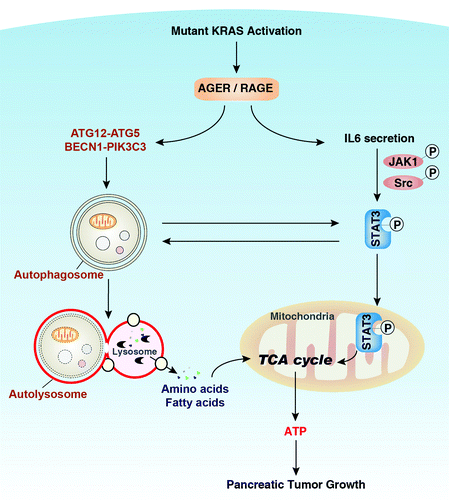Figures & data
Figure 1. AGER, pSTAT3 and autophagy sustain bioenergetics during pancreatic cancer growth. Mutant KRAS is a master regulator of pancreatic cancer initiation and progression. AGER is expressed concurrently with progression of KRAS-promoted progression of pancreatic PanIN lesions. Autophagy is a process of degradation in which double-membrane autophagosomes sequester cytoplasmic material and fuse with lysosomes, where they are degraded and recycled to feed the tricarboxylic acid (TCA) cycle and support ATP production in mitochondria. Overexpression of AGER promotes autophagy by increasing ATG12–ATG5 conjugation and BECN1-PIK3C3 complex formation. In addition, AGER inhibits IL6 autocrine/paracrine secretion and IL6-induced phosphorylation of STAT3 at Ser727. Phosphorylation of STAT3 at this residue is important for its mitochondrial localization and enhancement of oxidative phosphorylation. There is also a positive feedback loop operative between autophagy and activation of mitochondrial pSTAT3. Thus the AGER-IL6-pSTAT3 autophagic pathway enhances bioenergetics and promotes pancreatic tumor growth.
